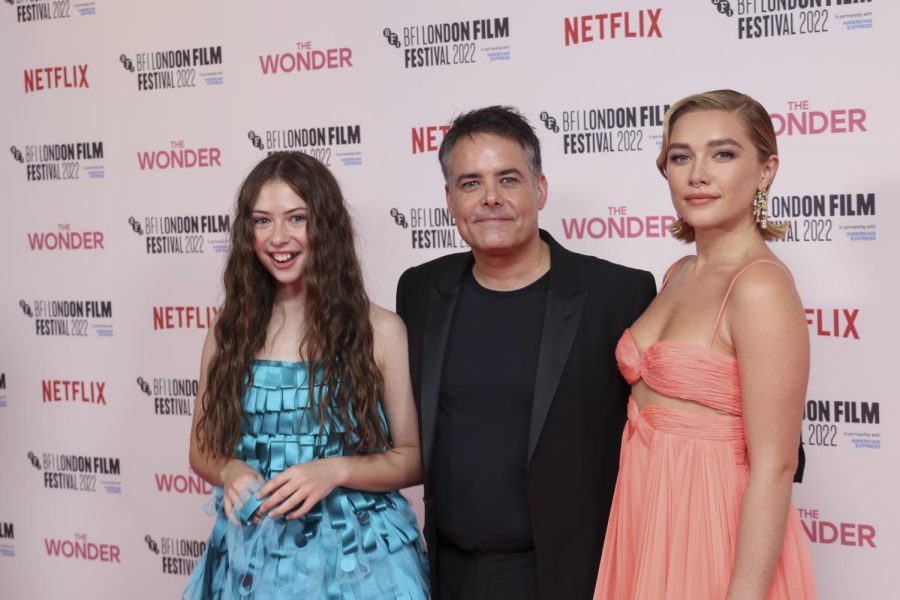‘The Wonder,’ a compelling film that encapsulates what a historical drama should be
AP
Kila Lord Cassidy, from left, director Sebastian Lelio and Florence Pugh pose for photographers upon arrival for the premiere of the film ‘The Wonder’ during the 2022 BFI London Film Festival in London, Friday, Oct. 7, 2022. (Photo by Vianney Le Caer/Invision/AP)
December 4, 2022
Netflix’s new movie “The Wonder” will leave fans wondering what they just watched. Sebastián Lelio directs an emotional, psychological drama film that explores the power of a story.
Set in 1862, the movie follows an English nurse named Elizabeth “Lib” Wright, played by Florence Pugh, who travels to Ireland to tend to 11-year-old Anna O’Donnell, played by Kíla Lord Cassidy, who apparently hasn’t eaten in four months.
When Wright arrives, she is tasked by the town’s committee to watch over the girl and to figure out how she is not eating while appearing healthy. The movie follows Lib as she tries to discover how Anna is secretly being fed while Lib deals with past trauma herself.
The unique element of the film is the breaking of the fourth wall. The film starts out on the modern-day set of “The Wonder” and there is a woman narrating, telling the viewer that they’re about to see a story unfold. The camera pans over to the inside of a ship, where we first meet Wright, and the narrator says that the characters we’re about to see believe very deeply in their stories.
About a quarter into the film, it is revealed that this narrator is Kitty O’Donnell, played by Niamh Algar, who is Anna’s sister, as she looks into the camera and reminds the audience that “we are nothing without stories”. Kitty is seen breaking the fourth wall again at the very end of the film where she stands in the movie set of “The Wonder” and has traded her 19th-century gown for a modern black trenchcoat.
The film has many themes such as religion and faith, but the main theme is how powerful a story can be.
In this case, it was how the power of a fake story can have the most appalling consequences. As it turned out, Anna was indeed fasting and being secretly fed small amounts of chewed-up food by her mother who was manipulating her. Anna was not some “miracle” the whole town saw her as, but a victim who was being told to fast in order for her dead brother’s soul to reach heaven. This revelation was dumbfounding because it was so extreme, and my prediction of how the film was going to end wasn’t even close to this truth.
The tone of the film is dark and mysterious, reflecting Wright’s task in figuring out why this young girl isn’t eating, and the O’Donnell family’s strange past which is fed to viewers piece by piece throughout the film.
The soundtrack is one of, if not the best, part of the movie. Composer Matthew Herbert sets the atmosphere of the movie with haunting music that will cause a chill to go down the viewer’s spine. The music ranges from being a quick tempo to quiet and precise, perfectly matching the pacing of the film.
Pugh, a famed actress best known for “Midsommar” and “Black Widow,” takes on another period piece character, after starring as Amy March in “Little Women,” and once again performs exceptionally. Pugh’s acting skills are one of the reasons why this film is a worthwhile watch. She delivers a riveting, profound performance with the right emotional range to hook viewers in, making them want to learn more about her character’s story.







